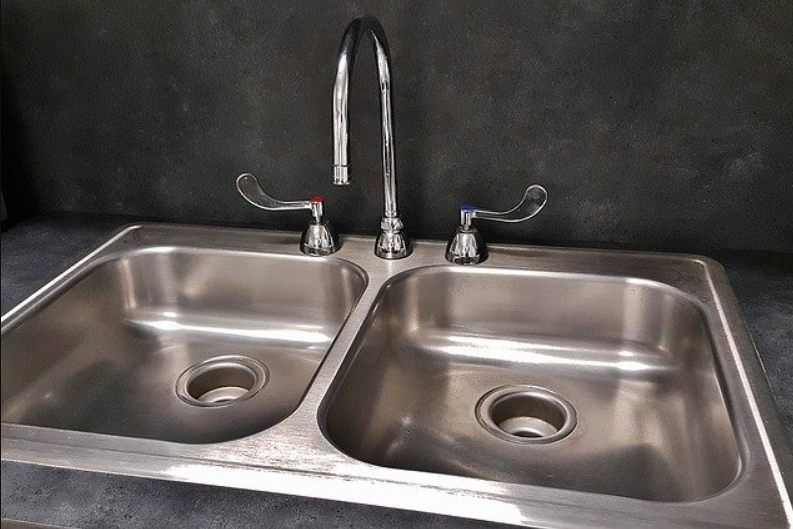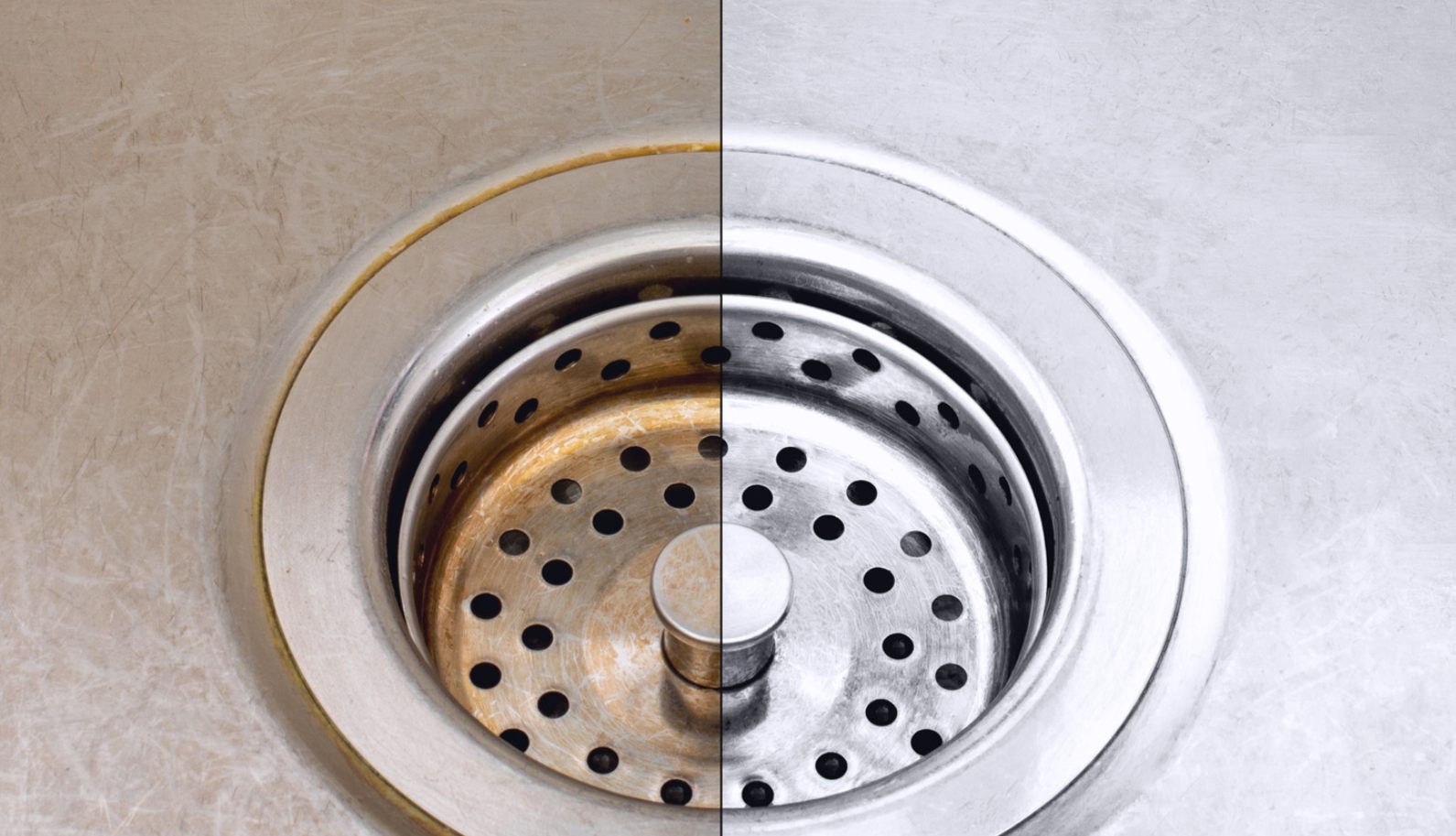How do I keep my stainless steel sink spotless ?
Stainless steel sinks are very popular in modern kitchens because they are durable, look great, and are not easily rusty and corrosion. But it is hard to keep them as white as possible, since they get water spots, stains and scratches. Clean a stainless steel sink on a regular basis, keep it in tip-top condition, and follow a few professional recommendations to keep it spotless. In this essay, I will explain some ways in which a stainless steel sink can be kept in great shape, I will give you the advice and experience that I have had on maintaining my stainless steel sink.
Understanding Stainless Steel
Stainless steel is distinctive, and before we get into cleaning methods. stainless steel : Stainless steel is an alloy of iron, chromium and other metals. This is due to the chromium that leaves an oxide on the surface, and that keeps the rust and corrosion away. But this surface can be damaged by harsh chemicals, rough instruments or neglect, turning it brown and tainted.
The misconception that stainless steel is entirely impervious to staining is a false one. It does not stain as easily as other types of materials, but water spots, fingerprints and mineral deposits may still appear on it, particularly in the hard water region. To know that, you can start with proper cleaning and maintenance methods.

Daily Cleaning Routine
The secret to a stainless steel sink that’s always in the good book is routine. Clean the sink once a day to keep the grime from collecting and keep the sink clean and clean.
Rinse After Use: When you are done with dishes or sink use rinse with warm water and remove food, soap scum, and debris. This keeps stains and odours away.
Dry with Microfiber Cloth/Paper Towel: Wash down the sink once a week with a soft microfiber cloth or paper towel. This is a very important step in keeping water spots from occurring particularly if you live with hard water. Leave water outside to air dry and you can get ugly mineral deposits.
Simple Dishwasher: A simple dish wash in warm water is usually enough to clean every day. Apply soap on it using a sponge or clean cloth, scrubbing it up. Don’t use scrubbers that are too rough, because they scratch the steel.
Layla Armstrong, as the author of this article and a home management expert, says :
For me in the kitchen, if I put a few extra seconds into cleaning my sink after I’ve used it, it makes all the difference. It’s long-term habit that has cut down on deep cleaning and kept the sink fresh and clean.
Weekly Deep Cleaning
You should maintain it once a day, but once a week a deep clean removes stains and shines the sink.
Paste of Baking Soda: Baking soda is a mild but powerful cleaner for stainless steel. Prepare paste using baking soda with a bit of water. Rub the paste onto the surface of the sink and scrub with a dry cloth or sponge along the grain. This procedure gets rid of the stain, grease and odour without scratching the steel.
Vinegar Solution: Another excellent home cleaner is white vinegar. Put equal amounts of vinegar and water in a spray bottle and spray it on the sink. Wait a few minutes and remove it with a wet sponge. Mineral build-up is dissolved by vinegar and the sink becomes bright.
You can also read these articles on our website:
Commercial Cleaners: If you are looking for commercial cleaners, get one that’s specifically for stainless steel. Use only hypochlorite-free cleaners that will dissolve the protective oxide layer. — Always refer to the manufacturer’s instructions and try the product on a small spot.
I let my sink go on one really busy week and it formed some intractable water spots. It was then cleaned with a baking soda paste and vinegar solution that gave it back its shine and made me realize I need to clean it regularly.

Preventing Scratches and Damage
Stainless steel sinks are hardy but they’re not foolproof. There can be scratches and dents in them, so try to be cautious.
Utilize a Sink Grid or Mat: Put a sink grid or rubber mat at the bottom of the sink to help keep it free from scratches that pots, pans and tools might leave behind. Those add-ons also stop things from banging on the steel and thus are less loud.
Don’t Use Vibratory Tools: Steel wool, hard scrubbers, harsh chemicals will scrape and dissolve the layer. Remain with squishy wipes, sponges, and non-abrasive cleaners.
Cutting Boards: Don’t use the sink for cutting. There are deep scratches from knives, food debris can get stuck in the grooves and cause staining and bacteria.
In my home kitchen, I have silicone mat for my sink, it not only protects the sink but it’s also non-slip for washing dishes. That little bit of detail has saved the world on wear and tear.
Dealing with Hard Water Stains
Water spots and minerals on stainless steel sinks caused by hard water is also a common cause. If you’re in a hard water area, you must also take extra care to clean your sink.
Lemon Juice: Lemon acid dissolves minerals in mineral humus. Take a lemon and cut it in half and apply it to the stained places. Let the juice stand a few minutes and rinse and drain the sink.
CLR Cleaner: When you have to deal with a stubborn hard water stain, calcium, lime and rust (CLR) cleaner can be used. But don’t apply to much and wash it well, because overexposure will rust the steel.
Water Softener: Installing a water softener can save you from the hard water stains. This is more expensive but will save you money on your sink as well as your appliances and pipes.
I live in a hard water area, so I’ve had to put up with the white marks on my sink. Lemon juice and vinegar was the only thing that made the sink shine again, no chemical smells or anything.
Restoring Shine and Removing Scratches
Even the best-cared-for stainless steel sinks deteriorate over time and will get a couple of small scratches. And lucky for us, you can get them looking good again.
Olive Oil or Mineral Oil: Having cleaned the sink, rub a bit of olive oil or mineral oil into a damp cloth and rub it down. This protects and gives shine to the sink.
FAQ:
- Why does my stainless steel sink always look dirty?
Stainless steel sinks often appear dirty due to water spots, soap residue, and mineral deposits from hard water. Fingerprints, grease, and food particles can also leave visible marks. The reflective surface of stainless steel tends to highlight these imperfections, making them more noticeable. Regular cleaning is necessary to maintain its shine. - How do you keep stainless steel spot free?
To keep stainless steel spot-free, dry it with a soft cloth after each use to prevent water spots. Use a mild detergent or specialized stainless steel cleaner for regular cleaning. Avoid abrasive scrubbers that can scratch the surface. Applying a small amount of baby oil or mineral oil can help repel water and maintain shine. - How can I make my stainless steel sink look new again?
To restore your stainless steel sink, clean it with baking soda and water to remove stains and grime. For tougher stains, use a vinegar-water solution or a stainless steel polish. Buff the surface with a microfiber cloth to bring back its shine. Regular maintenance will help keep it looking new. - Will vinegar damage a stainless steel sink?
Vinegar is generally safe for stainless steel sinks when diluted with water. However, using undiluted vinegar or leaving it on the surface for too long can damage the protective layer of the steel. Always rinse thoroughly after cleaning with vinegar and avoid using it excessively to prevent potential corrosion or dullness.
Article source:

I’ve been using dish soap to clean my sink, but I didn’t know vinegar could be so effective. I’ll try using a vinegar-water solution to remove water spots.
The tip about drying the sink after use to prevent water stains is simple but helpful. I’ll start keeping a microfiber cloth nearby for this purpose.
I didn’t realize that baking soda could be used to scrub away tough stains. I’ll give it a try on the stubborn spots in my sink.
The suggestion to avoid using abrasive cleaners makes sense. I’ll switch to gentler methods like using a soft cloth and mild detergent.
I’ve been struggling with soap scum in my sink. The idea of using lemon juice to cut through it sounds like a good solution.
The advice about cleaning in the direction of the grain is something I hadn’t considered. I’ll pay more attention to the grain pattern when wiping down my sink.
I didn’t know that club soda could be used to restore shine. I’ll try spraying some on my sink and buffing it with a soft cloth.